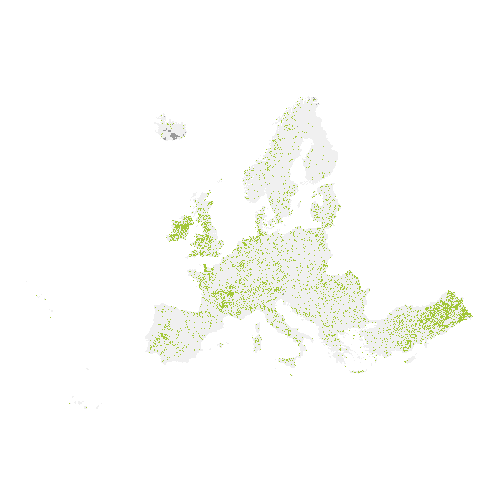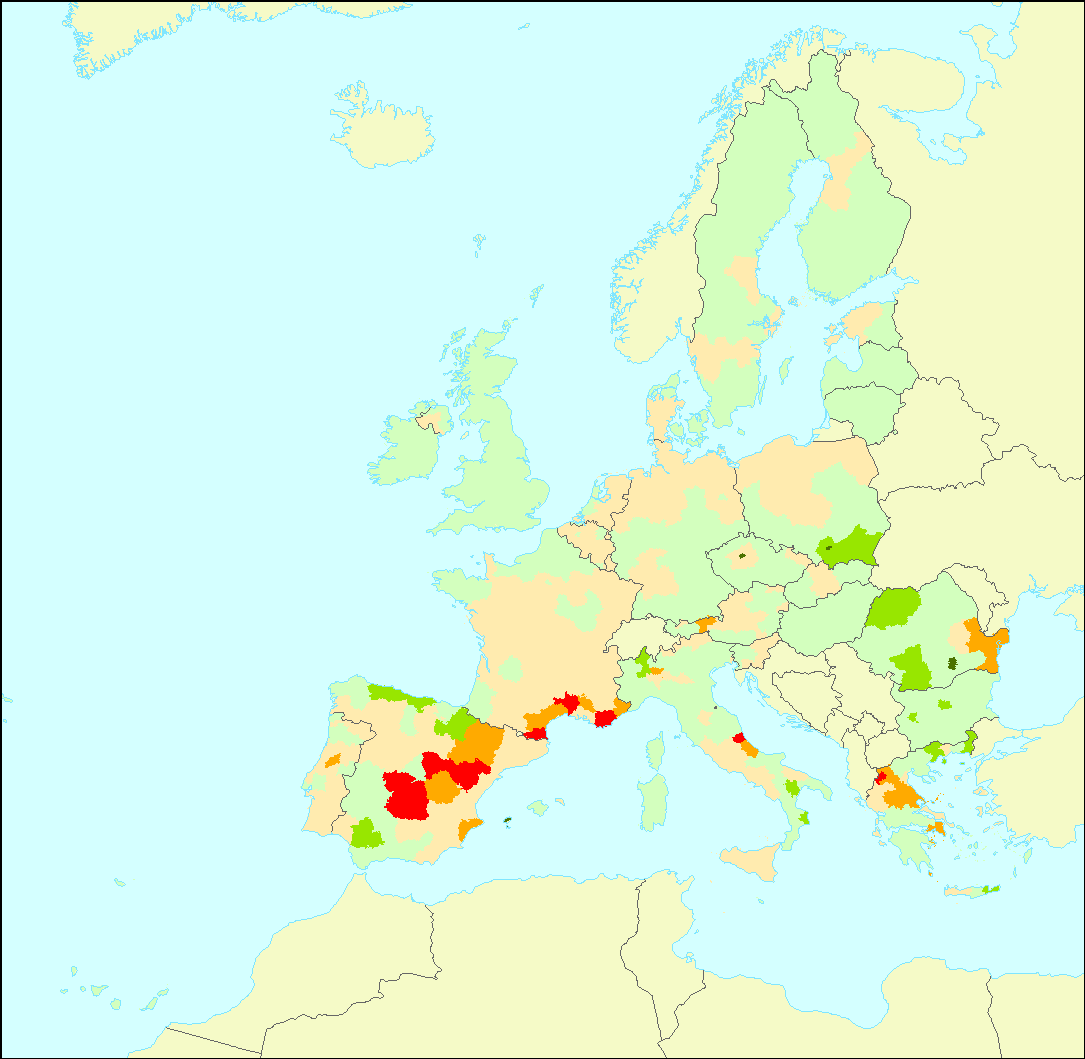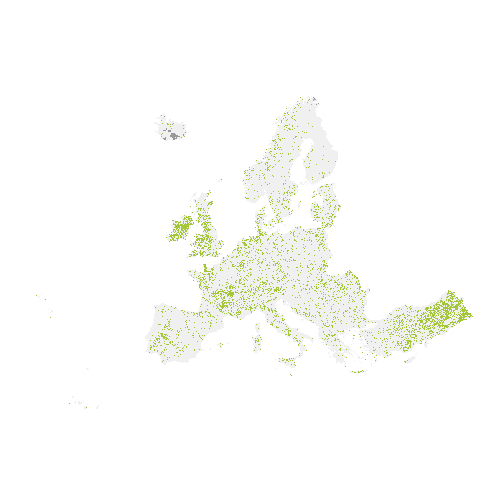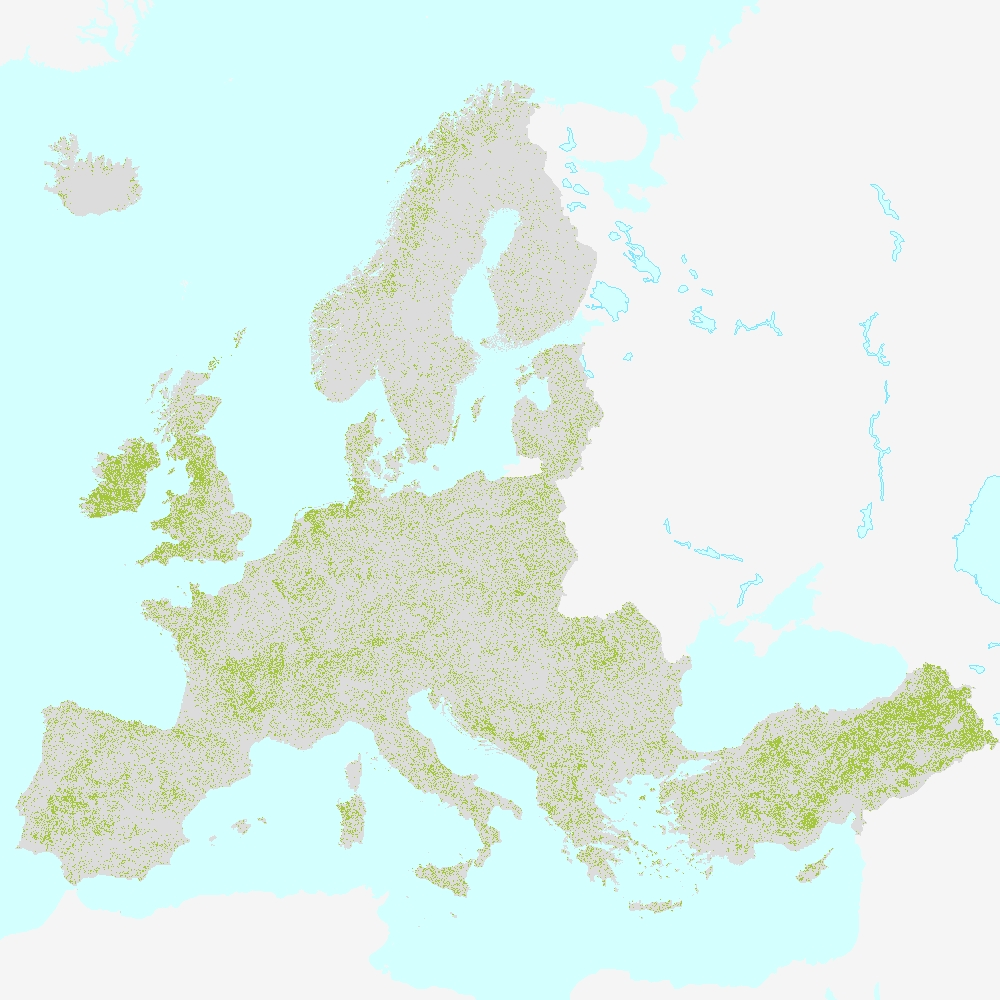grassland
Type of resources
Available actions
Topics
INSPIRE themes
Keywords
Contact for the resource
Provided by
Years
Formats
Representation types
Update frequencies
Scale
Resolution
-

The main high resolution grassland product is the Grassland layer, a grassland/non-grassland mask for the EEA39. This grassy and non-woody vegetation baseline product includes all kinds of grasslands: managed grassland, semi-natural grassland and natural grassy vegetation. It is a binary status layer for the 2015 reference year mapping grassland and all non-grassland areas in 20m and (aggregated) 100m pixel size and for the 2018 reference year - in 10m and (aggregated) 100m pixel size. The production of the high resolution grassland layers was coordinated by the European Environment Agency (EEA) in the frame of the EU Copernicus programme.
-

The dataset represents a pressure trend indicator as measure of intensification of agroecosystems. The trend indicator is the share of grassland area affected by internal Land Cover flows between CORINE 2006 and 2012, presented at NUTS3 level. Those changes were used to identify the internal flows related to more intense use, mainly linked to the increase in resource and machinery use. The internal flows related to intensification were defined based on an expert consultation done in the context of the ETC/ULS actions.
-

The dataset represents a pressure trend indicator as measure of intensification of agroecosystems. The trend indicator is the share of cropland area affected by internal Land Cover flows between CORINE 2006 and 2012, presented at NUTS3 level. Those changes were used to identify the internal flows related to more intense use, mainly linked to the increase in resource and machinery use. The internal flows related to intensification were defined based on an expert consultation done in the context of the ETC/ULS actions.
-

The dataset represents a measure of intensification trend of agroecosystems. Nutrient input is a specific measure related to the intensification processes in the management of grassland ecosystems. The average change rate of nutrient input between 2005 and 2010 is used to show these tendencies in the NUTS regions (NUTS3 and NUTS2 for Germany). The data comes from the EEA draft nutrient accounts, developed by EEA and ETC/ULS, and is based on spatial reference data on crop and livestock distribution, yield and livestock statistics, and official conversion factors.
-

The main high resolution grassland product is the Grassland layer, a grassland/non-grassland mask for the EEA39. This grassy and non-woody vegetation baseline product includes all kinds of grasslands: managed grassland, semi-natural grassland and natural grassy vegetation. It is a binary status layer for the 2015 reference year mapping grassland and all non-grassland areas in 20m and (aggregated) 100m pixel size and for the 2018 reference year - in 10m and (aggregated) 100m pixel size. The production of the high resolution grassland layers was coordinated by the European Environment Agency (EEA) in the frame of the EU Copernicus programme.
-

The High Resolution Layer (HRL) Grassland 2018 raster product provides a basic land cover classification with 2 thematic classes (grassland / non-grassland) at 10m spatial resolution, covering the EEA38 area and the United Kingdom. The production of the High Resolution grassland layers was coordinated by the European Environment Agency (EEA) in the frame of the EU Copernicus programme. This is the main High Resolution grassland product. This grassy and non-woody vegetation baseline product includes all kinds of grasslands: managed grassland, semi-natural grassland and natural grassy vegetation. It is a binary status layer for the 2015 reference year mapping grassland and all non-grassland areas in 20m and (aggregated) 100m pixel size and, for the 2018 reference year, in 10m and (aggregated) 100m pixel size. The dataset for this product is provided as 10 meter rasters in 100 x 100 km tiles (fully conformant with EEA reference grid) grouped according to the EEA38 countries and the United Kingdom.
-

The HRL Grassland 2018 100 m aggregate raster product provides a basic land cover classification with two thematic classes (grassland / non-grassland) at 100m spatial resolution, covering the EEA38 area and the United Kingdom. The production of the High Resolution Grassland layers was coordinated by the European Environment Agency (EEA) in the frame of the EU Copernicus programme. The main High Resolution Grassland product is the Grassland layer. This grassy and non-woody vegetation baseline product includes all kinds of grasslands: managed grassland, semi-natural grassland and natural grassy vegetation. It is a binary status layer for the 2015 reference year mapping grassland and all non-grassland areas in 20m and (aggregated) 100m pixel size and, for the 2018 reference year, in 10m and (aggregated) 100m pixel size. The 100 meter aggregate raster is provided as a full EEA38 and United Kingdom mosaic (fully conformant with the EEA reference grid).
-

The dataset shows the percentage of grasslands under high pressure from management practices in 2010. The area percentage is calculated in relation to the total grassland area within NUTS3 regions (NUTS2 for Germany). The management pressure on grassland was calculated by combining information of nitrogen input from the Farm Structure Survey (FSS), the Corine Land Use/Land Cover dataset and other environmental characteristics such as topographic conditions, soil and climate conditions (etc). This dataset is part of the condition/pressures assessments done for agroecosystems under ETC/SIA actions for MAES (Mapping and Assessment of Ecosystem Services).
 RUC Geo-Data catalogue
RUC Geo-Data catalogue